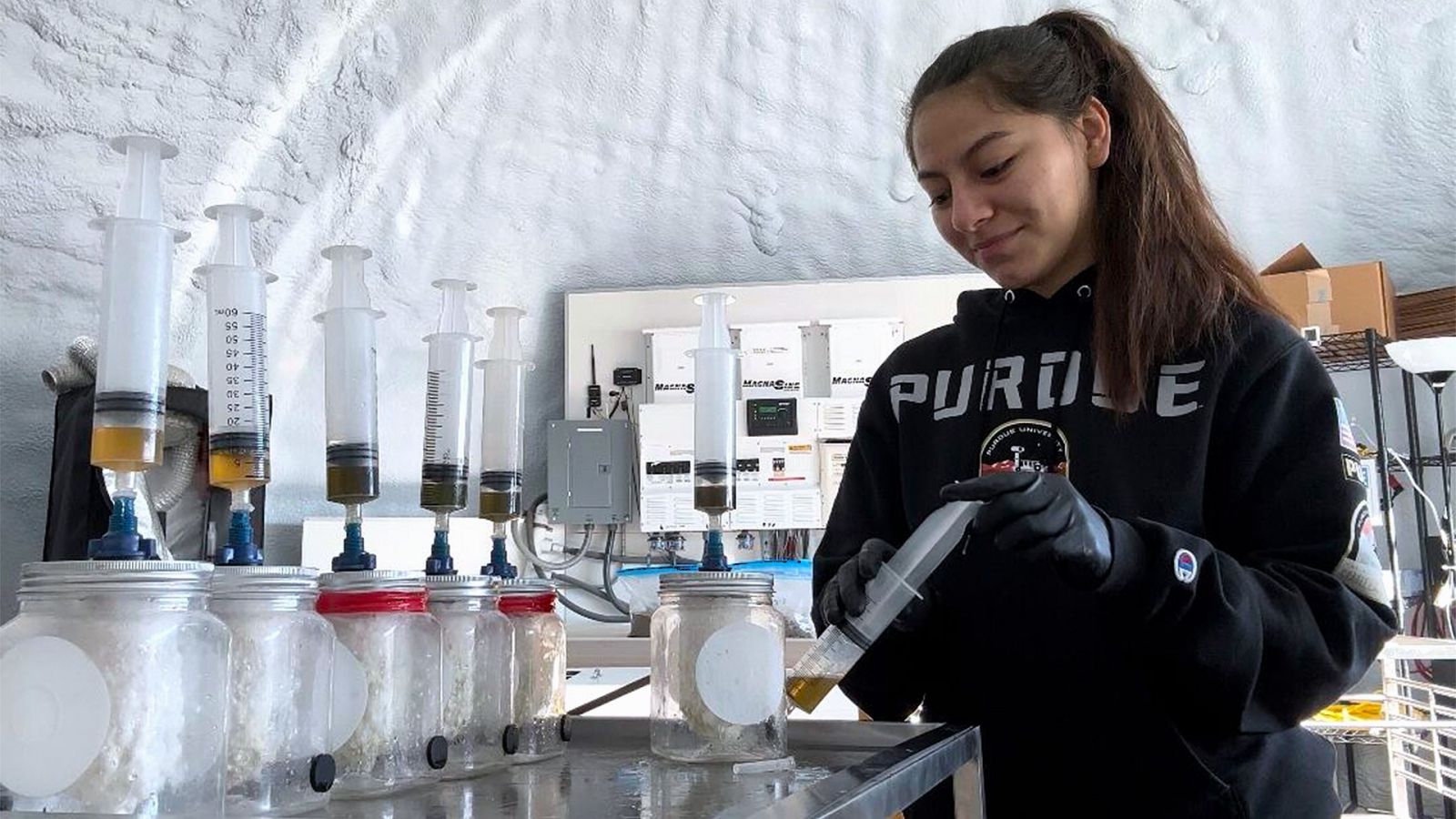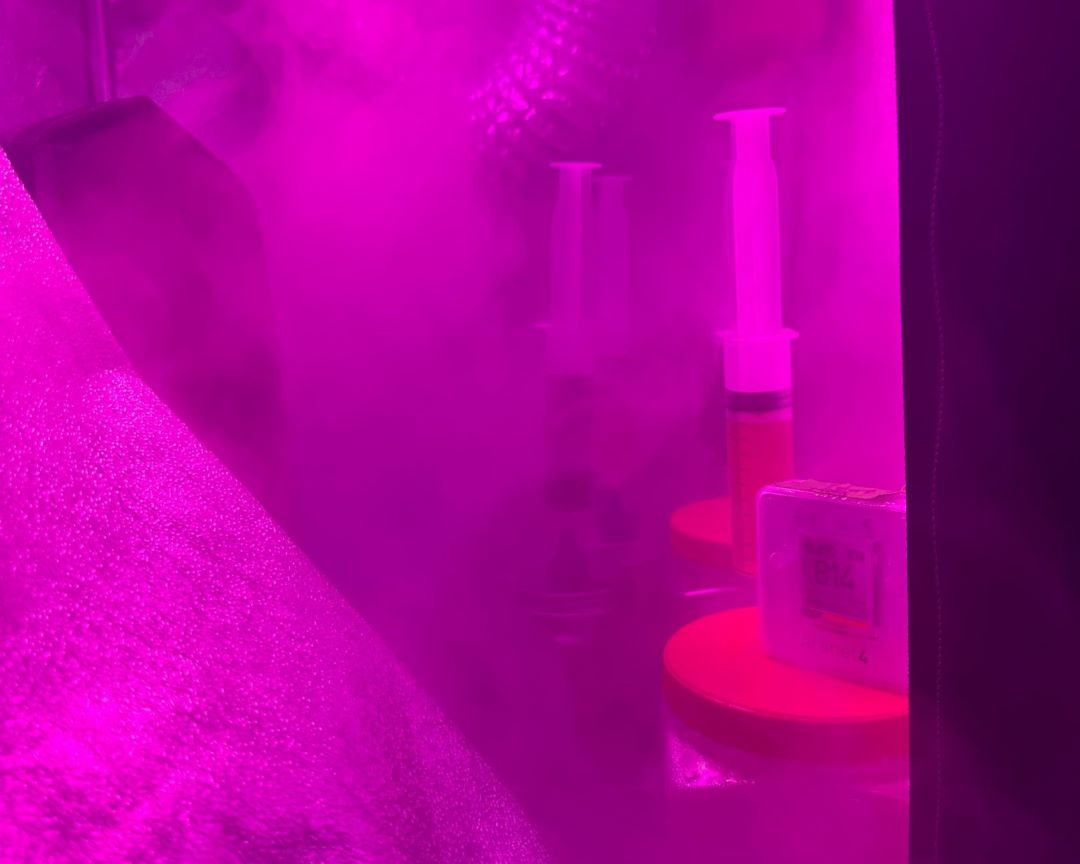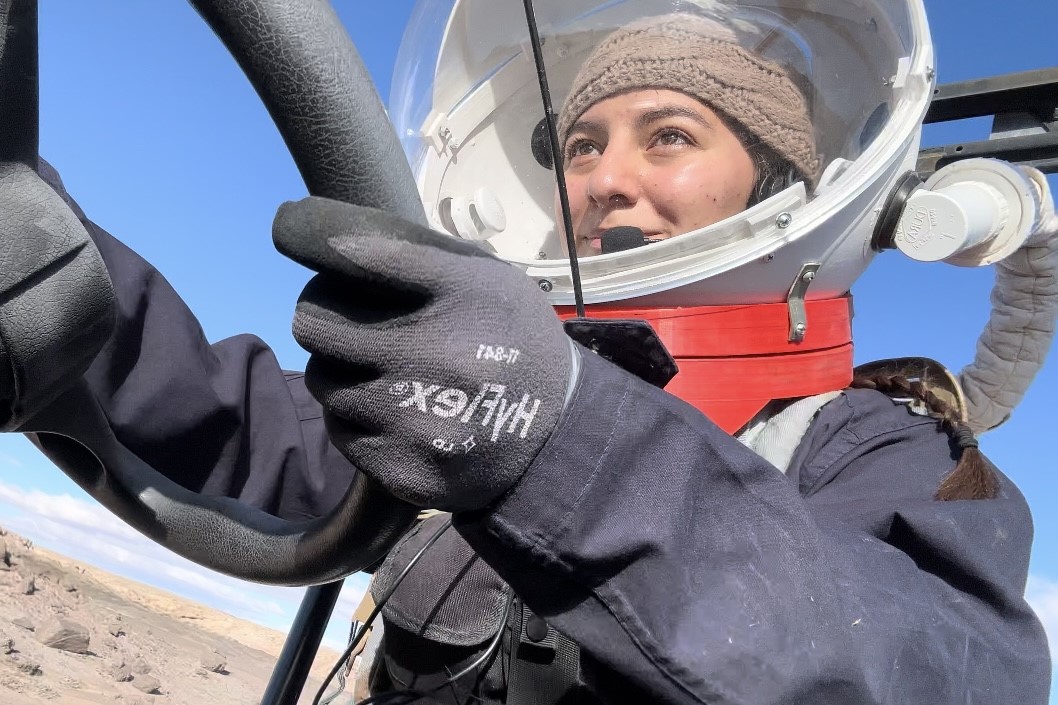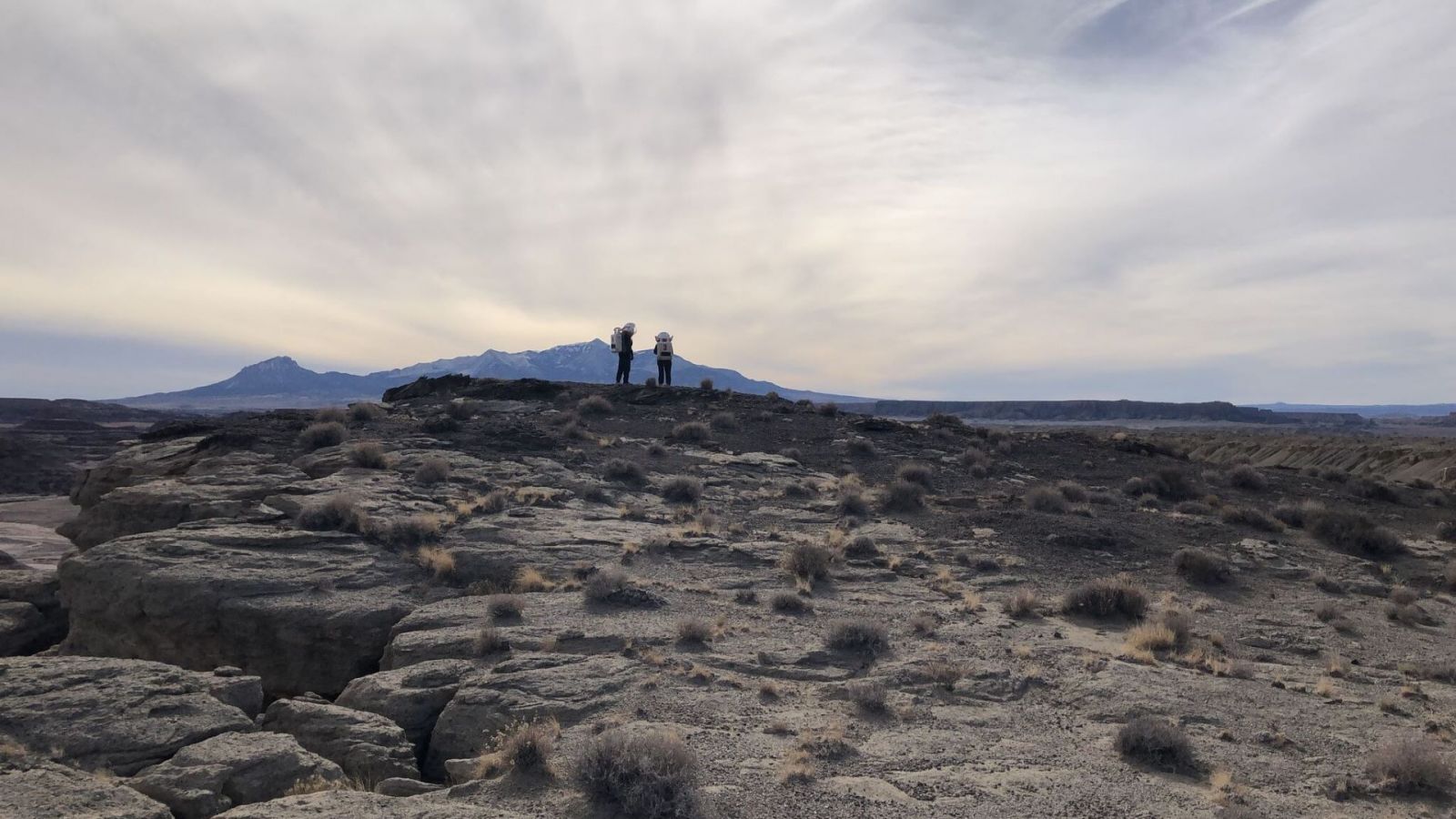
Adriana Sanchez, a mechanical engineering technology student, spent nearly two weeks at the Mars Desert Research Station (MDRS), a simulated habitat in the Utah desert that mimics the conditions on Mars for the purpose of simulating extraplanetary research conditions.
Sanchez—the lone undergraduate student in cohort of six researchers—has trailblazed a path for herself at Purdue with the ultimate aim of becoming an astronaut, and her work at MDRS is one part of an ongoing plan to garner an astonishing breadth and depth of experience to that end.
“Transferring schools was a difficult decision,” Sanchez, a graduate of Purdue Polytechnic High School’s second-ever class, said. After high school, Sanchez spent her freshman year at the Indiana Institute of Technology before becoming a mechanical engineering technology major at Purdue Polytechnic.
“I [knew] what I wanted out of my education, and I’ve always known that I’m going to have to make it happen for myself no matter the situation. … And I’ve always known I wanted to be an astronaut.”
Purdue, with its legacy of spacefarers, was Sanchez’s clear choice: “I remember on my Purdue transfer application, I put down something like, ‘if you guys don’t let me in, I’m going to keep applying until you do!’”
The decision to transfer has provided several opportunities for Sanchez—from connecting with NASA’s Langley Research Center employees to the MDRS excursion.
Crafting a plan
MDRS was established in 1998 by the Mars Society, who to this day are the owners and caretakers of the research facility. The society seeks to create "a permanent human presence on the Red Planet," and they state that this goal can be achieved in a reasonable time frame "by taking a 'living-off-the-land' approach."
The Mars Society is therefore most strongly invested in inventing and discovering methods of survival that could allow for a flourishing settlement of human beings on the planet. This means solving resource challenges of the most fundamental kind; in addition to food, water, and infrastructure, the Mars Society also has a focus on finding fuel sources that are both native to Mars and could be processed on-site in a human settlement.
Sanchez’s research proposal for MDRS needed a useful and novel application that fit into the framework of the Mars Society's goals. Her initial idea was a result of an ongoing collaboration with engineering professor Marshall Porterfield. Porterfield introduced her to the current state of work in biological science and technology, with a particular focus on NASA’s efforts to create sustainable systems for organic life in space.

“I’ve been reading for years about plants and other life that help the wider ecosystem,” Sanchez said. “I’d known that there were mushrooms found growing out of the Great Pacific Garbage Patch, and then I started researching the different kinds of mushrooms that can digest plastic.”
A great deal of this research is still developing; Sanchez said that the fungal species pestalotiopsis microspore, for instance, was discovered in 1880, “but scientists didn’t find out it could digest plastic until around 2011.”
Sanchez made the “blue oyster” mushroom the focus of her research at MDRS, because “while it isn’t the most efficient at digesting plastics, it’s also edible.” In the enclosed environment of a space station where efficiency is essential to keep human astronauts alive, an organism that can process synthetic waste while providing calories is “an easy two-birds-one-stone calculation.”
Life on Mars
Typical days at MDRS required crew members to juggle duties for their academic work alongside, frankly, rather relatable domestic chores. “A day at the base would be, of course, we all wake up at the same time, generally around 7 to 8 a.m.,” Sanchez recalled. “We would all sit and have a cup of coffee, make breakfast together, and whoever made breakfast didn't have to do dishes.”
Sanchez’s responsibilities ranged from routine maintenance of the habitat’s greenhouse to monitoring the status of the blue oysters.

“I had a lot of tasks because I was taking care of the greenhouse and I had to feed my experiments. So in the morning I would go out, I would make sure that all the plants had enough water. I would give them an extra drink if they needed them, and I'd also have to record how much I was giving them each day,” Sanchez explained.
The unique environment of MDRS, with its daily routines and protocols, showed the cohort how a real Martian facility might function. “I would go to the greenhouse through the science dome,” Sanchez said.
“So you have to walk through these tunnels from the habitat—there's an airlock that we have to use, to mimic what it would be like actually walking through an airlock. So we would stand there, make sure the first door is closed, then we could open the second one and then close that door, and then walk to the greenhouse.”
Learning from the surroundings
Sanchez was the sole undergraduate in her MDRS cohort. Thus, she spent a lot of time developing fellowship with and picking the brains of the other researchers who are deep into their respective fields. “There were two PhD candidates and three master’s students,” Sanchez said. “One of the, had just finished their thesis right before they left for MDRS. They were all extremely intelligent people.”
To be “surrounded by geniuses the entire time” was a touch intimidating at first, but Sanchez's implacable spirit of curiosity was her best asset in keeping up with her colleagues.

“There was a night where one person was [explaining] their research … And everyone is asking questions because they all kind of understood what he was talking about, right? And I’m trying my best to keep up with what’s going on—and that was honestly incredible.
“I love not knowing something. I don’t like being the smartest person in the room. And, like, if you are the smartest person in the room, you need to get out of that room! Find a different room, you know?”
Sanchez, also an assistant in the Provost’s office, a manager for Purdue men’s wrestling and a coach and competitor for the women’s wrestling team, will be heading into her senior year following the spring 2025 semester.
Additional information
